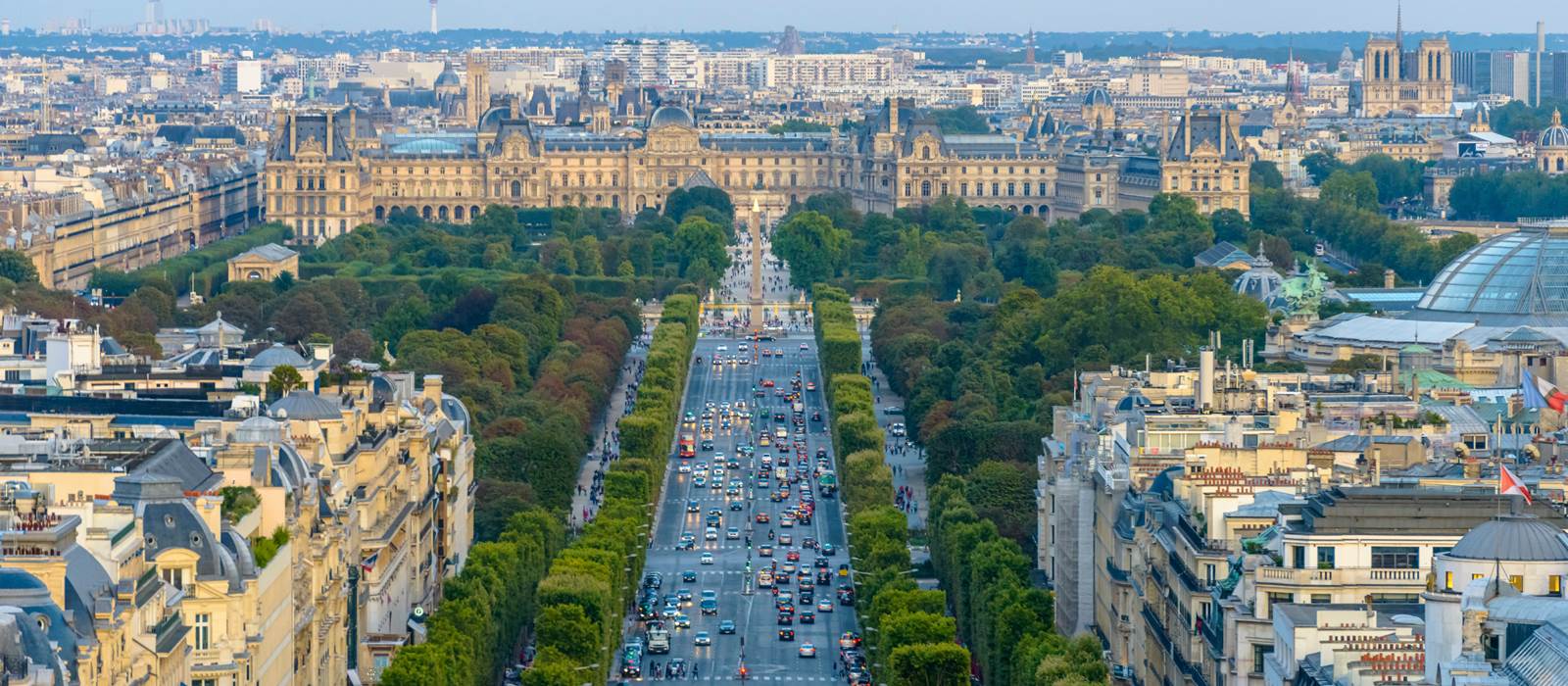
The History of Avenue des Champs-Élysées
The Most Famous Street in Paris and the World
How Grandiose Gardens Blossomed into a Sensational Shopping Avenue
The words 'Champs-Élysée' conjure up scenes of a bustling tree-lined street and provide a two-word definition for chic French shopping experience in many a modern mind. However, the grand facades of the avenue's boutiques and sun-lit tables of pavement cafes were once home to a more naturally stunning setting. Centuries before Louis Vuitton launched its flagship store, Louis XIV had become part of the avenue's journey when he employed Landscape Architect André Le Nôtre to extend the Jardins de Tuileries, and the rest is a long, winding road of discovery.
Royal Gardens
It's hard to visualise the Haussmann inspired architecture of the Champs-Élysée as the rolling fields and scattered merchant's gardens it once was. It wasn't until 1616 that work began to transform the area, initially into a tree-lined path on request of Marie de' Medici, wife of Henry the IV and then into an extension of the Jardins de Tuileries 51 years later. Known as 'Grand Cours' or 'Grand Promenade' it was sheltered by rows of elms on either side and boasted beautiful symmetrical flowerbeds, providing a fitting continuation to the King's Tuileries Gardens redesigned by Nôtre. It took until 1709 for the name Champs-Élysée to be used to describe the avenue, which when translated means 'Elysian fields', deriving from Greek mythology, in which 'Elysium' was a paradise where fallen heroes could enjoy the afterlife - a name which became fitting for its future in many ways.
Commemoration and Celebration
After further extensions, Champs-Élysée had gained its reputation as a fashionable avenue by the late 18th century. Buildings began to spring up along it during the Empire, however it wasn't until after 1828, when it was officially declared municipal property of Paris that it began to take its modern form. Fountains, footpaths and later gas lighting added to its attraction, with shops, hotels and restaurants opening their doors for the first time. The completion of the Arc de Triomphe at its furthest end in 1836 provided a prestigious monument to commemorate those who had fought in the French Revolutionary and Napoleonic Wars, later also paying tribute to those who lost their lives in WW1 with the Tomb of the Unknown Soldier. The Champs-Élysée became synonymous with the celebration of war heroes from the Bastille Day Parade, the largest military parade in Europe, held along the stretch every year since 1919, as well as the parades of French and American forces after the capital's liberation in 1944. The avenue has also been known to host large cultural celebrations with its fame growing from being chosen to host the Exposition Universelle in 1855, an international exhibition to showcase the industries and arts Paris prided itself on. It has attracted large gatherings for New Years Eve and France winning the 1998 FIFA World Cup, as well as providing the finishing line for the Tour de France since 1975. However, historical and cultural significance aside, the Champs-Élysée is most famously known for providing a luxurious shopping experience.
World-Class Shopping
High-end boutiques line the picture-postcard stretch towards the Arc de Triomphe, while grand gardens, theatres and galleries are to be found at the opposite end. Although high-street brands have joined the likes of Louis Vuitton, Cartier and TAG Heuer along the avenue in recent years, it has continued in its legacy as the destination for the latest luxury goods, with catwalk creations perfectly presented in grand boutiques worthy of international accolade. New York's jeweller Tiffany & Co have been the latest prestigious brand to open a boutique at No. 62, after investing five years renovating the 10,765 square feet of retail space. When refreshment is needed locating elegant tearoom Ladurée is never an issue, with crowds of admirers lining the window displays of brightly coloured macarons. High-class brasserie Le Fouquet's remains a popular meeting place for the rich and famous with past guests including Jackie Onassis, Charlie Chaplin and Winston Churchill. To make way for the 100 million visitors who walk down the avenue each year, the side lanes were converted into pedestrian zones in 1994, showing that it has maintained its Parisian charm and attraction.
Transformation
Avenue des Champs-Élysée has taken a significant historical journey in form, function and name from countryside fields to the home of the world's leading fashion boutiques. Follow in its footsteps by visiting the Jardins de Tuileries for free, in which the essence of Nôtre's original French garden continues in its structure, before strolling along the tree-lined 1.9 km avenue itself in which luxurious window displays hold many glittering attractions leading up to the Arc de Triomphe. Hotel Amarante Champs Elysée is located one minute walk away from Champs-Élysée, providing the perfect location from which to explore the area, as well as enjoy an elegant four-star stay in the capital.

